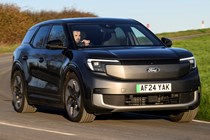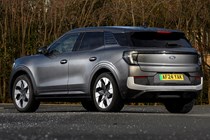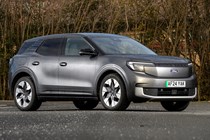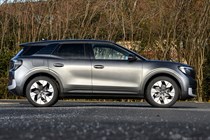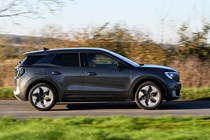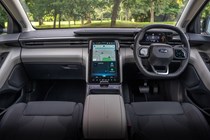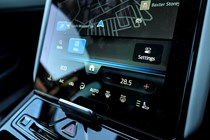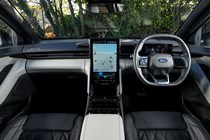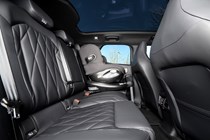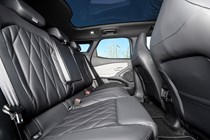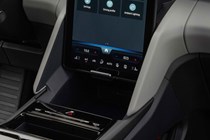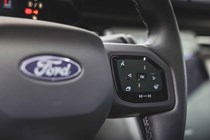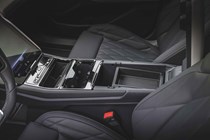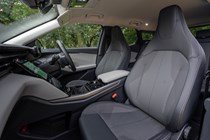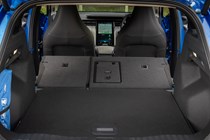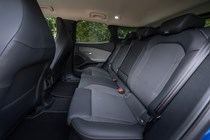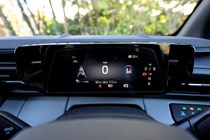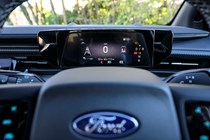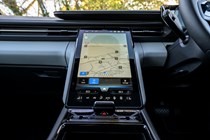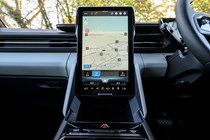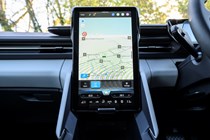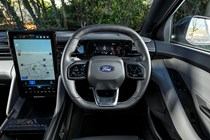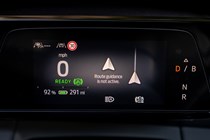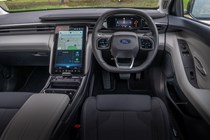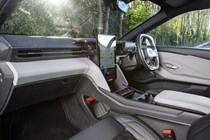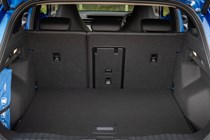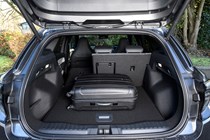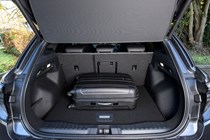Ford Explorer engines, drive and performance
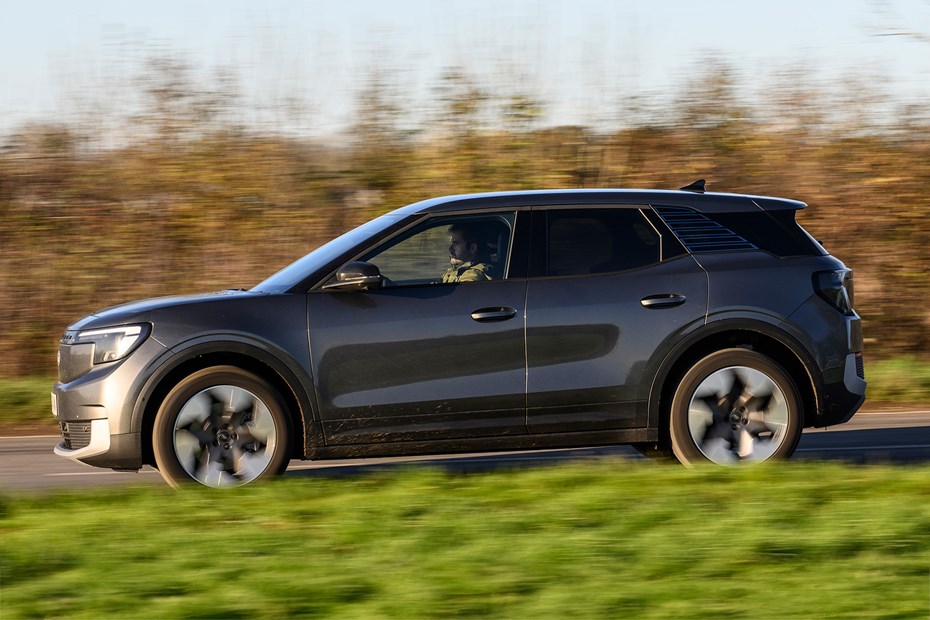
- Two battery sizes to pick from
- Rear or four-wheel drive
- Strong acceleration in from all models
What power options are there?
Currently, the Explorer is available with just two powertrains. Initially, the cheapest option, badged Extended Range RWD, has a 77kWh battery pack and a single 286hp electric motor mounted on the rear axle. Ford says this system gives the car a 0–62mph time of 6.4 seconds and a top speed of 112mph.
Above that, there’s the Extended Range AWD which has a slightly larger 79kWh battery and an extra motor on the front axle that boosts power up to 340hp. The extra poke trims the car’s 0–62mph time down to 5.3 seconds, but its top speed remains the same.
We’ve driven both versions and would say the RWD has more than enough poke for most people. It feels genuinely quite quick with strong acceleration right up to motorway speeds and a bit beyond. The AWD car is downright rapid, out-sprinting the far lighter Ford Focus ST from 0-62mph.

What’s it like to drive?
- Pleasingly agile
- Firm but not uncomfortable ride
- Good steering weight and response
Different enough from the ID.4 and its other MEB siblings to feel distinct. Ford has made some tweaks to the platform’s steering, shock absorbers and anti-roll bars, all of which have fettled the Explorer’s ride and handling.
Both the RWD and AWD, riding on 20-inch wheels (standard with Premium spec), are night-and-day better than the latest Volkswagen ID.4, also on 20-inch wheels. Ford has gone firmer than Volkswagen and especially Skoda’s Enyaq, making it feel less wobbly and more consistent in the way it deals with bumps.
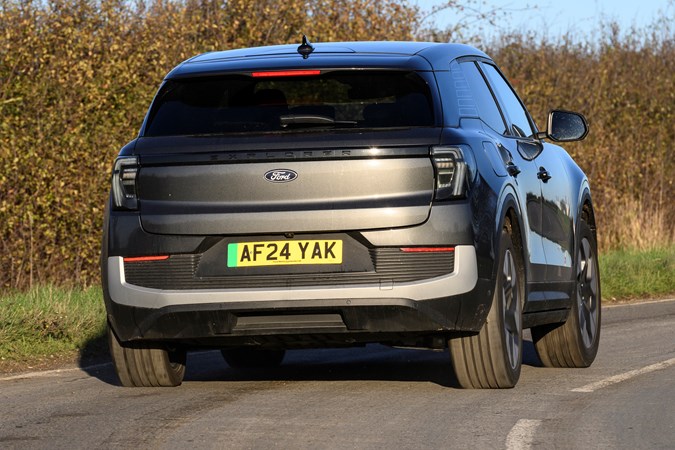
The ride isn’t quite perfect, though. There’s no engine to drown out the sound of the suspension working, and there is a bit of underlying fidget although not enough to be annoying. Ford hasn’t managed to eradicate body roll, either, even if it is better than the VW.
It’s a good all-rounder, though. It’s very happy to dawdle around town and it relished the challenge of the twisty hairpins and unsurfaced logging roads we pointed it at on our international test drive. It works back in the UK, too: our RHD RWD example feels happy to be cornered quickly and feels well balanced, allowing you to have a bit of fun.
Switching driving modes makes an appreciable difference to the level of brake-energy recuperation. In Normal when you lift off the throttle, the car slows automatically in accordance with traffic and speed limits. Sport mode makes it slow a lot; Eco mode, not so much. There’s also a B setting on the stubby gear selector on the steering column to ramp up the level of recuperation further.


